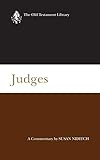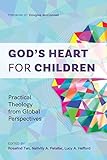Bible Translation And Relevance Theory The Translation Of Titus
Material type: TextPublication details: Stellenbosch, South Africa Stellenbosch University 2000Description: 267p PDF, A4 70.42MB Abstract, TOCSubject(s): Dissertation note: Doctor of Philosophy in Theology (PhD) Stellenbosch University December 2000 Prof J.C Thom
Dr C.H.J Vander Van Merwe Summary: Relevance theory has seriously challenged the theoretical soundness of formal and functional equivalence as Bible translation methods. In Translation and relevance: Cognition and context, Gutt (1991) argued that relevance theory provides translators with the best available framework for understanding and practicing translation. In his effort to provide a comprehensive account of translation, he proposed two new approaches to translation: direct translation and indirect translation. He did not, however, develop direct and indirect translation into well-defined approaches to translation. This study explores the viability of direct and indirect translation as approaches to Bible translation. First, by applying insights drawn from relevance theory, it spells out the theoretical and practical implications of these approaches in an attempt to develop them into well-defined translation methods. The explication of the two new approaches shows how and why relevance theoretic approaches to translation differ from formal and functional equivalence. In addition to describing the general approach of direct and indirect translation, it also demonstrates how each approach handles specific translation issues such as figurative language, implicit information, ambiguity, and gender-biased language. Then, by using them to translate the epistle to Titus, the study tests the practical effectiveness of each new approach. This lengthy application yields many examples of how relevance theory provides translators with valuable guidance for making difficult translation decisions. It emphasises the need for translators to take measures to bridge the contextual gap between the source context and the receptor context, illustrating how this can be done by providing footnotes in a direct translation or by explicating implicit information in an indirect translation. The study closes with a brief assessment of the two new approaches and some suggestions for further research. The conclusions show both the value and the limitations of the results of this study.
TextPublication details: Stellenbosch, South Africa Stellenbosch University 2000Description: 267p PDF, A4 70.42MB Abstract, TOCSubject(s): Dissertation note: Doctor of Philosophy in Theology (PhD) Stellenbosch University December 2000 Prof J.C Thom
Dr C.H.J Vander Van Merwe Summary: Relevance theory has seriously challenged the theoretical soundness of formal and functional equivalence as Bible translation methods. In Translation and relevance: Cognition and context, Gutt (1991) argued that relevance theory provides translators with the best available framework for understanding and practicing translation. In his effort to provide a comprehensive account of translation, he proposed two new approaches to translation: direct translation and indirect translation. He did not, however, develop direct and indirect translation into well-defined approaches to translation. This study explores the viability of direct and indirect translation as approaches to Bible translation. First, by applying insights drawn from relevance theory, it spells out the theoretical and practical implications of these approaches in an attempt to develop them into well-defined translation methods. The explication of the two new approaches shows how and why relevance theoretic approaches to translation differ from formal and functional equivalence. In addition to describing the general approach of direct and indirect translation, it also demonstrates how each approach handles specific translation issues such as figurative language, implicit information, ambiguity, and gender-biased language. Then, by using them to translate the epistle to Titus, the study tests the practical effectiveness of each new approach. This lengthy application yields many examples of how relevance theory provides translators with valuable guidance for making difficult translation decisions. It emphasises the need for translators to take measures to bridge the contextual gap between the source context and the receptor context, illustrating how this can be done by providing footnotes in a direct translation or by explicating implicit information in an indirect translation. The study closes with a brief assessment of the two new approaches and some suggestions for further research. The conclusions show both the value and the limitations of the results of this study.
| Item type | Current library | Collection | Call number | URL | Status | Date due | Barcode | |
|---|---|---|---|---|---|---|---|---|
 Thesis
Thesis
|
South African Theological Seminary Online Resource | Electronic Holdings | Link to Resource | Available | 0000000002394 |
Doctor of Philosophy in Theology (PhD) Stellenbosch University December 2000 Prof J.C Thom
Dr C.H.J Vander Van Merwe
There are no comments on this title.
Log in to your account to post a comment.





